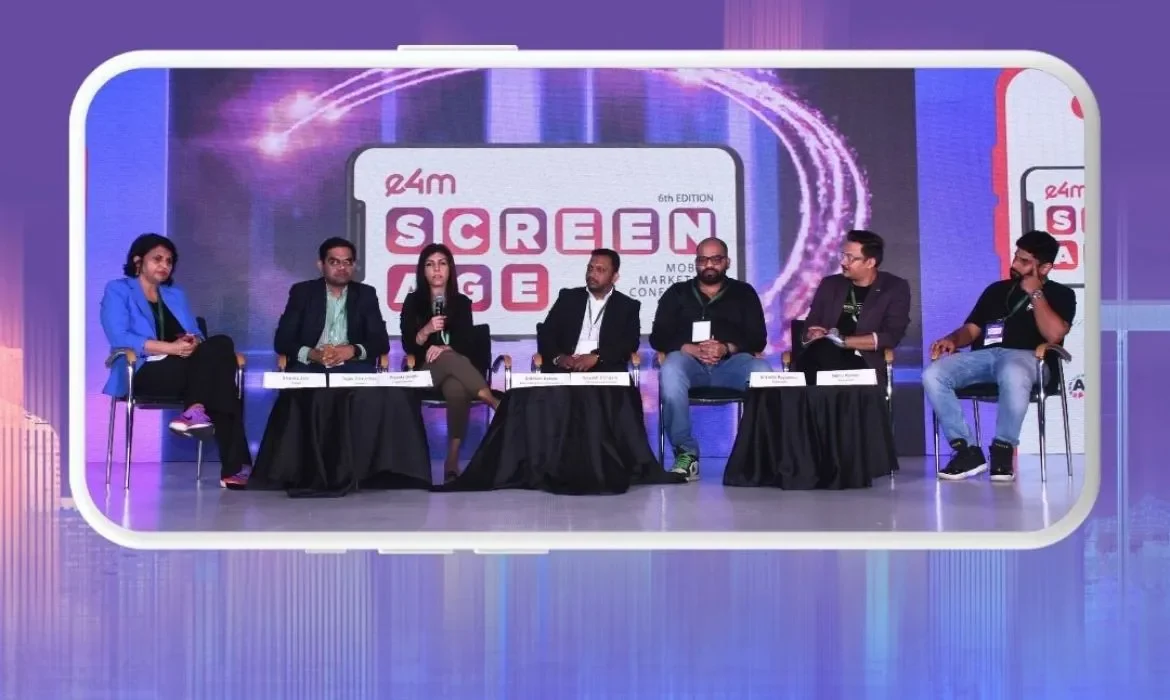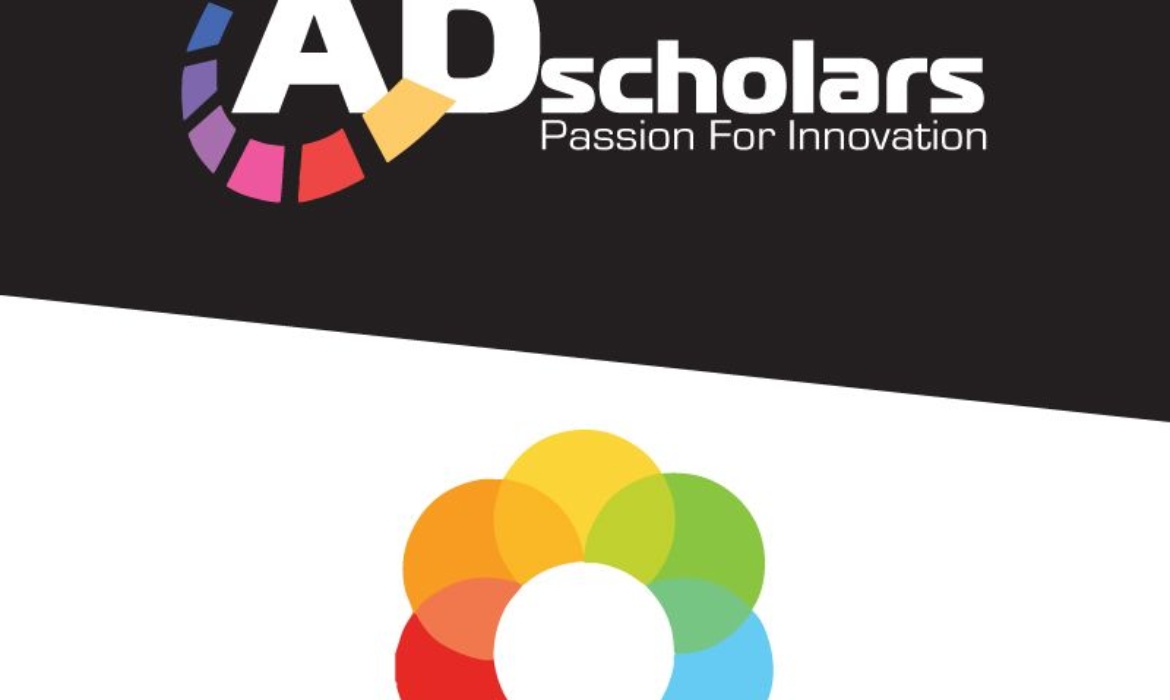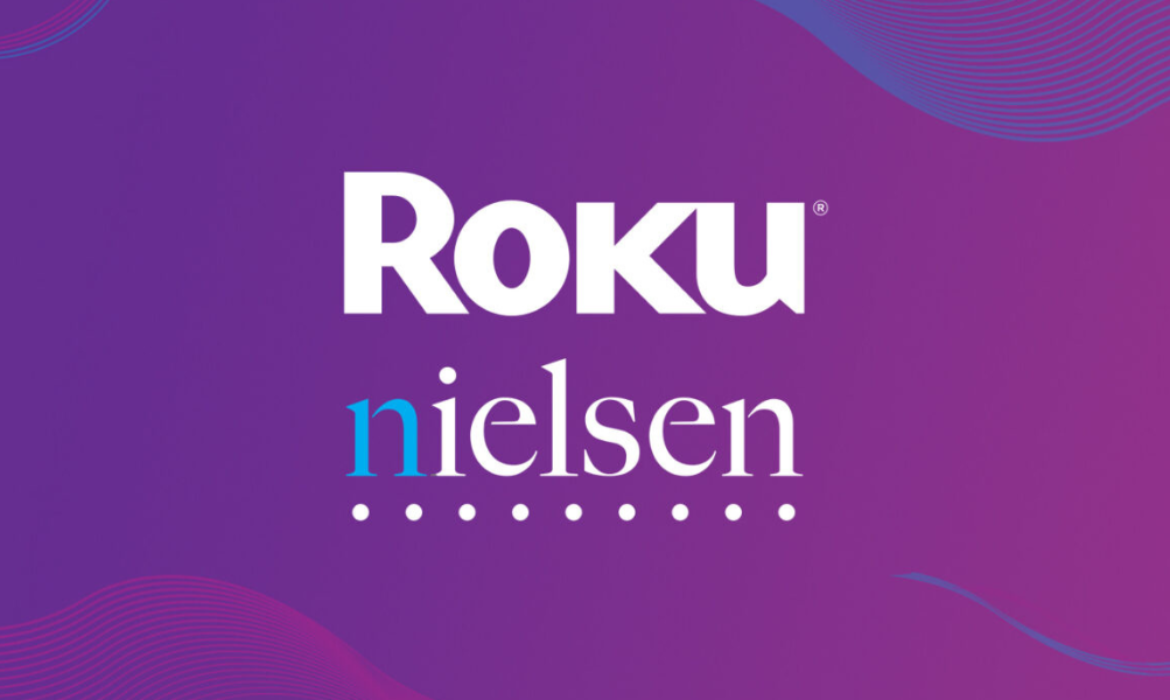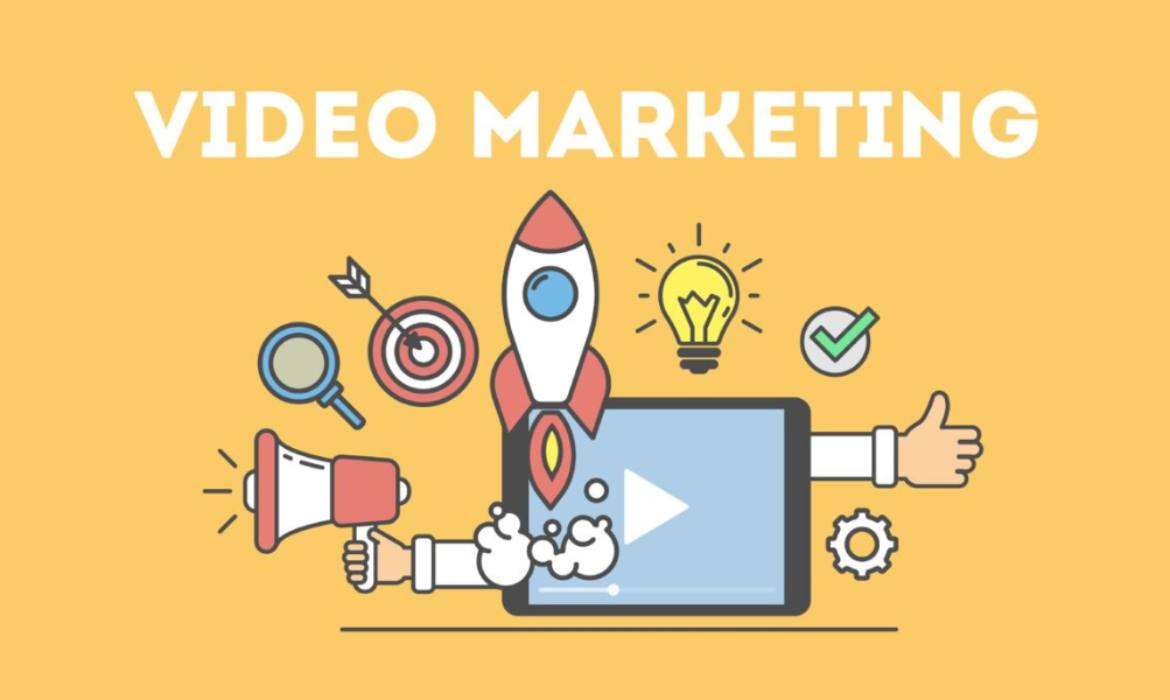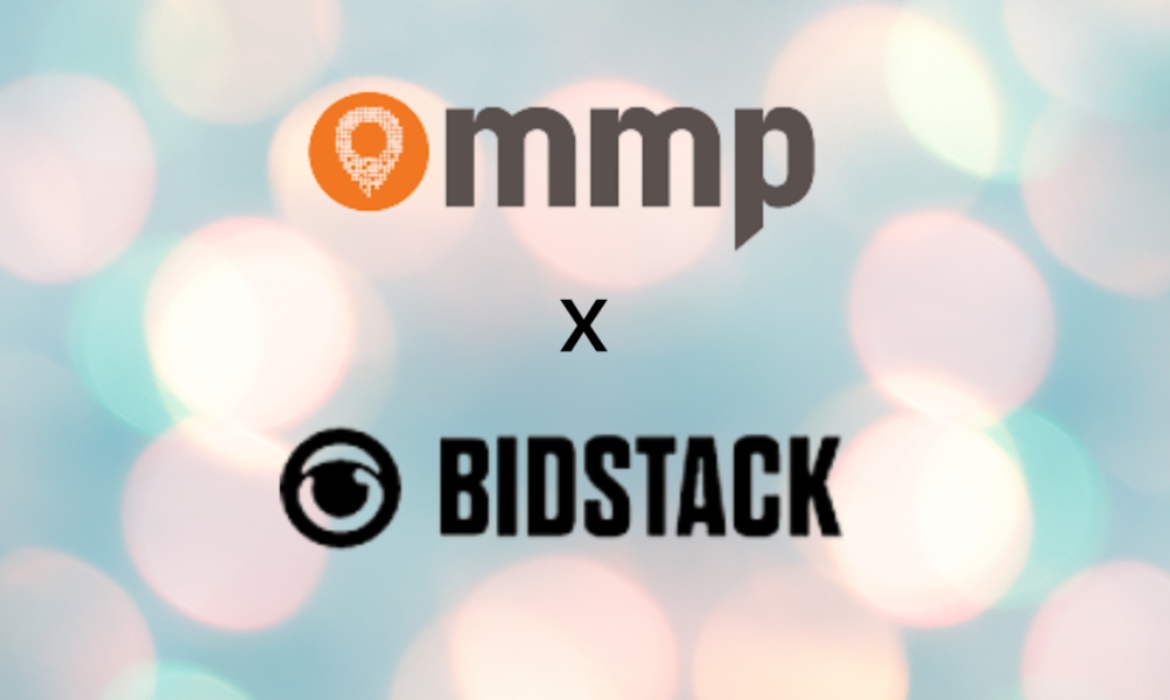Reshaping Mobile Advertising: AdScholars at E4M Screenage Summit
The sixth edition of the E4M Screenage took place in Mumbai on November 29, 2023. With mobile marketing taking center stage as the topic of discussion, the summit attendees included professionals in digital marketing, business leaders, innovators, entrepreneurs, and other areas of the advertising industry.
ADscholars Co-partners at E4M Screenage
ADscholars were the proud co-partners of the E4M Screenage. The conference explored the core of mobile marketing in depth. Our CEO, Srikanth Rayaprolu was a member of the panel discussion on the subject of “Mastering Mobile Advertising and Crafting Digital-Age Ads.” The panel explored the changes in consumer behavior and brand pivots to mobile-first strategy.
As the panelists discussed, mobile transformation has become a primary tool for observing how brands are expanding beyond traditional one-way communication. Their discussion shed light on the transformation of mobile in India, mobile market penetration, and mobile advertising consumption over the last few years.
Brands are moving beyond traditional one-way communication through mobile transformation. The panel discussion shed light on how mobile has transformed in India, the mobile market penetration, and mobile advertising consumption.
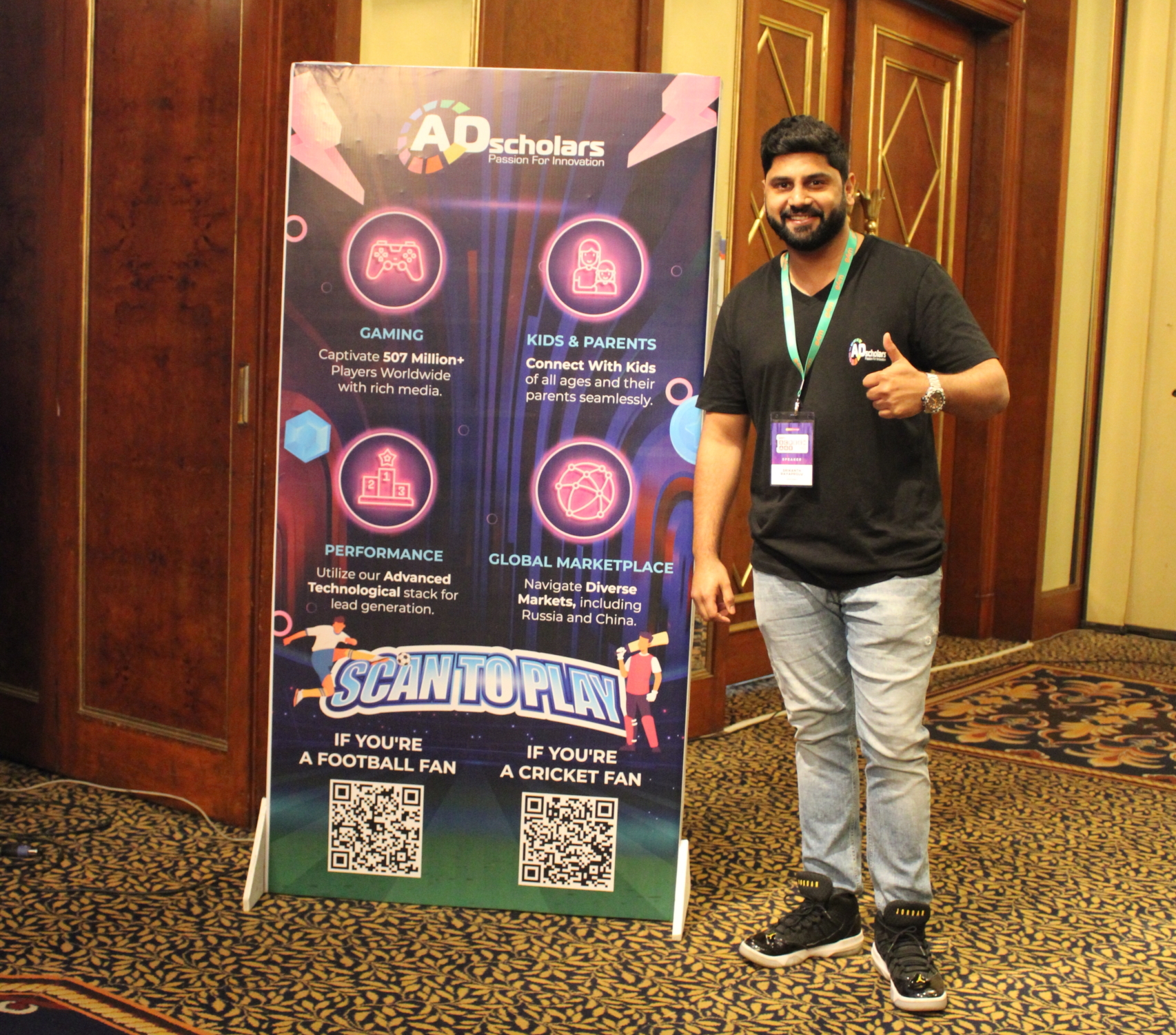
The Panel Discussion
The stellar panel featured industry leaders from diverse verticals: Shweta Jain, Chief Business Officer, Luxury, Reserve & Craft India & South Asia, Diageo; Tejas Chaudhari, Performance Marketing, Lead e-commerce, Unilever; Priyanka Gandhi, Associate Director, Integrated Marketing Communication & Ecommerce Marketing, Colgate-Palmolive; Siddesh Kerkar, Head of Marketing, Aditya Birla Finance Udyog Plus, Aditya Sun Life Insurance; Suyash Dongare, Head of Digital Marketing, VIP Industries and Srikanth Rayaprolu, CEO and Co-Founder, ADscholars. Nikhil Kumar, Vice President India, Southeast Asia & Middle East, mediasmart, was the session chair for the panel discussion.
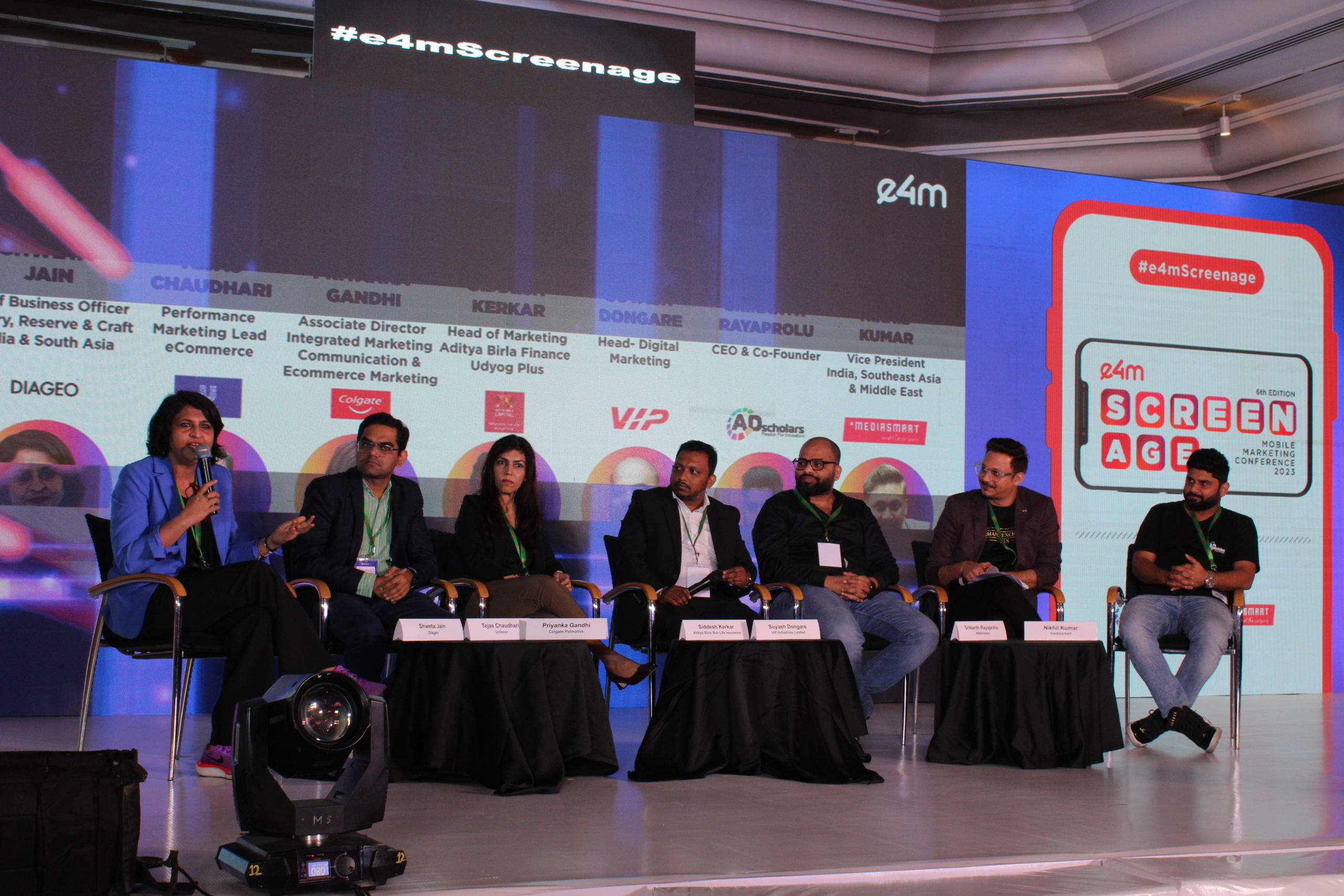
Speaking on the subject, Srikanth Rayaprolu emphasized educating brands on the importance of mobile advertising and related things to tap into the landscape. Since the attention span on mobile has reduced, building gamification ads and keeping user engagement high on mobile has become essential. He also explained how brands need to ensure the ads that reach their potential audiences need to be interactive, fast-loading, and engaging. On an ending note, Srikanth underscored how ADscholars has been educating brands about ethical mobile ad practices. Furthermore, he suggested that there is a huge opportunity for mobile advertising in the future.
A Memorable Conclusion
ADscholars was honored to have been nominated for the Maddies Awards for Best Use of App/Games for Marketing. The team ended the event on a very positive note, taking back fond memories and influential connections with professionals from the industry.
AdScholars Enters Strategic Partnership With Kidoz In India
AdScholars has partnered with Kidoz, a leading COPPA & GDPR compliant contextual mobile advertising network that safely reaches over million kids, teens, and families every month. The partnership will allow Kidoz to scale its business solutions in India in addition to other markets. AdScholars is unlocking a strategic market with this emerging partnership in India.
By leveraging AdScholars’ programmatic expertise, Kidoz will be able to offer multiple activation options and unique experiences to consumers on their preferred platforms. Kidoz is a global leader in monetization for publishers and their unique monetization solution enables app publishers to safely monetize their apps with relevant ads.
The mobile ad tech developer’s leading SDK platform and direct programmatic connections reach over 400 million kids, teens, and families monthly across 5000+ apps. Kidoz Contextual Ad Network helps the world’s largest brands such as Mattel, Lego, Crayola, and many more safely reach and engage kids across top apps all over the world. With this platform, brands can reach out to Young dads and Moms to promote their products, especially focusing on FMCG brands.
AdScholars’ CEO Srikanth Rayaprolu said,
We are delighted to introduce innovative ad tech solutions to the Indian market. We have partnered with Kidoz in the other markets for quite some time and the advertisers’ response to the campaigns has been phenomenal.
He added,
Kidoz provides unique ad inventory for brands to showcase their ads to children between the age group of 4 years to 16 years. Additionally, this inventory allows brands to reach out to young parents too. We’re truly excited about the future with the launch of the Kidoz ad inventory in the Indian market.
Eldad Ben Tora, President and GM EMEA at Kidoz Inc. said,
India represents one of the largest growth potential audience segments in the Kidoz network and we are excited to partner with the Adscholars team, whose leadership, proven track record with the Kidoz product, and awareness and expertise of the Indian advertising market will bring the Kidoz Network to leading marketers looking for innovative ways to reach kids and parents.
Finally Coming! Netflix Reveals Ad Plan Price- Know Everything Here
Finally, the streaming giant unveils its much anticipated ad-supported subscription plan ‘Basic with Ads’.What was once believed unthinkable is a reality today. Ultimately, Netflix needs more revenue and ads are one of the resources to achieve it.
Netflix announced on the press call that it is introducing a lower-priced ad-supported plan for $6.99. The new subscription plan ‘Basic with Ads’ is $3 less than the current cheapest Netflix plan without ads.
And the surprising part is that Nielsen will be Netflix’s audience measurement partner, which is criticized for reporting inaccurate streaming data.
Know everything about the Basic ad plan
Markets: To start with, it will be rolled out in 12 countries- Australia, Brazil, Canada, France, Germany, Italy, Japan, Korea, Mexico, Spain, the UK, and the US minus India.
Launch date: On November 1, Canada and Mexico subscribers are the first to try the new plan. It will then roll out to the U.S., the U.K., France, Germany, Italy, Australia, Japan, Korea, and Brazil on November 3. Spain will be the last to experience the cheaper tier when it launches on November 10.
Pricing: Basic with Ads will cost just $6.99 a month in the US. It will not increase the price of the existing plans. The streaming giant will beat rival Disney+ by one month, which is hiking the price of its ad-free plan along with the launch of an ad-supported plan on December 8.

Credit: Tech Crunch
Let us analyze and compare the pricing with the competitors

Features of the Plan
Video quality only up to 720p/HD (now for both Basic with Ads and Basic plans); an average of 4 to 5 minutes of ads per hour; a limited number of movies and TV shows won’t be available due to licensing restrictions, which they are working on, and no ability to download titles.
Apparently, the percentage of unavailable titles differs depending on the country, Tech Crunch reports. As of launch, approximately 5% to 10% of the Netflix catalog will not be available in the ad-supported plan. Netflix will work to reduce that number as time goes on.
Offline Viewing: Furthermore, offline viewing would not be possible, which is characteristic of many AVOD services (ad-supported video-on-demand).
Contrary to early 2023 opinions, Netflix announced the Basic with Ads plan six months after unveiling its lower-cost ads plan. The company wrote, None of this would have been possible without our team’s hard work or Microsoft’s extraordinary partnership. The switch from linear is happening at an ever-increasing speed, with streaming now surpassing broadcast and cable in the US.
“We’re confident that with Netflix starting at $6.99 a month, we now have a price and plan for every fan. While it’s still very early days, we’re pleased with the interest from both consumers and the advertising community — and couldn’t be more excited about what’s ahead. As we learn from and improve the experience, we expect to launch in more countries over time.”
Exciting times for advertisers
Netflix’s announcement of an ad-supported subscription plan marks a milestone in its 25-year history. Ad companies will also benefit from Basic with Ads, the company said,
“the chance to reach a diverse audience, including younger viewers who increasingly don’t watch linear TV, in a premium environment with a seamless, high-resolution ads experience.”
Ad Format: Each ad will be 15 or 30 seconds in length, which will play before and during shows and films. New Netflix movies will have pre-roll ads without interruptions. Older movies, however, will receive preroll and midroll ads.
Advertiser Controls: Netflix will offer broad targeting capabilities by country and genre (e.g. action, drama, romance, sci-fi) to help advertisers reach the right audience and ensure ads are more relevant for consumers Advertisers will also be able to prevent their ads from appearing on content that might be inconsistent with their brand.
Verification Tools: Netflix has partnered with DoubleVerify and Integral Ad Science to verify the viewability and traffic validity of the ads starting in Q1 2023. These companies will ensure ads run where they’re supposed to and that they conform to industry standards. DoubleVerify will provide viewability and IVT verifications that will be valuable for advertisers’ marketing goals.
Audience Measurement: To enable advertisers to understand how Netflix can reach their target audience, Nielsen will use its Digital Ad Ratings (DAR) in the U.S. This will become available sometime in 2023 and eventually be reported through Nielsen ONE Ads.
In addition, Netflix is measuring its UK streaming numbers with the British TV rating agency Broadcasters Audience Research Board. An unrevealing move for a streaming service famous for its close-mouthedness about viewership figures.
Omida research suggests that 60% of Global Netflix Subs to Use Ad-Supported Option by 2027. New subscribers would be acquired and existing subscribers would be transitioned to the ad tier as part of this change.

Credit: Omida
The announcement of the news comes ahead of Netflix’s Q3 earnings announcement, which will be released next Tuesday, October 18. Whether Netflix of the future will be different from Netflix of the past will be determined by the next few years.
DoubleVerify Launches New Attention Lab For Advertisers
DoubleVerify, a leading software platform for digital media measurement, data, and analytics, announced the launch of the new DV Attention Lab. It will help advertisers optimize campaign performance using in-depth “attention data” on ad engagement and ad exposure.
One of its kind DV Attention Lab
The newly-formed DV Attention Lab will focus on providing advertisers with sophisticated, attention-based insights and recommendations on campaign performance powered by DV Authentic Attention covering industry benchmark reports, best practice guides, and illustrative case studies.
What is DV Authentic Attention?
DV recently released the DV Authentic Attention Snapshot, a comprehensive and holistic overview of high-level attention measurement for all DV advertisers. This feature helps DV clients achieve greater campaign performance against the current macroeconomic backdrop.
Parameters for measurement: DV Authentic Attention is a performance solution that analyzes over 50 data points on the exposure of a digital ad and consumer’s engagement with a digital ad and device – in real-time.
As for exposure, it evaluates the entire presentation of the ad, taking into consideration the viewable time, the share of the screen, video presentation, audibility, and more. As part of user engagement, it analyzes key events that occur while the ad creative is displayed, including user touches, screen orientations, video playbacks, and audio controls. Mark Zagorski, CEO of DoubleVerify explained in a statement,
“As advertisers grapple with economic uncertainty, the need to understand and maximize advertising performance is more important than ever. “
“Traditional KPIs such as viewability and clicks are not effective at identifying whether an ad is making an impact on the end viewer, and disruption from regulatory shifts to cookie deprecation is hindering how brands can use existing tools. With that in mind, we are confident that privacy-friendly attention metrics will become the industry’s new performance currency. We are excited to launch the DV Attention Lab™ to help advertisers navigate today’s digital landscape.”
And what they say
Mondelez International, one of the world’s largest snack companies, used DV Authentic Attention to evaluate and optimize the performance of a cross-platform display campaign for a popular snack brand. DV’s campaign was able to demonstrate that “high-exposure” impressions contributed to a 9 percentage point increase in brand favorability, an 8-point lift in consideration overall, and a 5-point increase in purchase intent. In the DV Attention Lab, the findings will be presented to the industry to illustrate how global brands and agencies can effectively utilize DV Authentic Attention to maximize media results.
Jennifer Brain-Mennes, Director of Global Media Strategy & Planning, Americas CX Lead of Mondelez said,
“We are excited to see them launch the Attention Lab and support the industry as attention-based measurement and targeting becomes even more critical. Now more than ever, advertisers need actionable insights to drive campaign optimization and deliver outcomes.”
Interesting Read: The Journey From Deterministic To Probabilistic Marketing
Google Introduces 2 New Audience Solutions In Display And Video 360
Google introduced new audience solutions with first-party data and machine learning in Display and Video 360. The two new updates are Optimized Targeting and Exchange Provided Identifier, also known as EPID.
What is it about
a. Optimized Targeting
Optimized targeting helps advertisers expand reach across relevant audiences and increase return on investment (ROI) with the touch of just a button. Campaign settings, such as manually-selected audiences including first-party data and Google audiences, influence the machine learning algorithm. Optimized targeting then uses machine learning to expand reach across other relevant groups without relying on third-party cookies.
It identifies and targets the most likely audience to drive impressions, clicks, and conversions depending on the advertiser’s strategy.
What are the performance results: This ultimately leads to better performance and increased conversions. The early test results found that advertisers who use optimized targeting in Display & Video 360 can see,

Image Credit: Google
Availability: In Display & Video 360, optimized targeting is currently available for YouTube Video Action campaigns. In the coming months, it will expand beyond YouTube to all display and video campaigns. Once launched, new eligible display and video campaigns will be opted into optimized targeting with the ability to opt out.
b. Exchange-Provided Identifier (EPID’s)
Exchange Provided Identifier, also known as EPID, provides Display & Video 360 with new signals which will be used to automatically future-proof frequency management tools. In the future, EPIDs will be powering a variety of other marketing use cases in Display & Video 360 with no action required by advertisers.
Expansion of PPID technology: EPID expands the PPID technology. Publisher Provided Identifiers, also known as PPIDs, became available for publishers to use programmatically last year. PPID allows publishers to send Google Ad Manager the first-party identifier for marketing use cases.
EPID makes it available to more exchanges, publishers, or vendors looking to share their first-party identifiers with Display & Video 360’s backend to improve the quality of programmatic ads served on their respective properties. An EPID from a particular exchange or publisher cannot be used outside of an exchange’s inventory. In this way, people are protected from being tracked across the web.
Testing and availability: Google has improved the feature based on the feedback from the tests with several exchanges and partners. In the coming months, EPID will be used to inform Display & Video 360 users frequency management solutions. Brands will be able to avoid ad repetition and maximize reach efficiency even in the absence of third-party cookies. Brands and agencies will automatically benefit from EPID when setting frequency goals.
In the blog, the company also stated, EPID will be used as a signal for building Google audience segments in Display & Video 360. This will give advertisers a chance to deliver more personalized ads on publishers’ sites for which EPIDs are received. Down the line, EPID will also help brands unlock other core advertising functionalities, like cross-device reach on a domain by domain basis, and invalid traffic prevention in a privacy-safe way.
How will this help the marketers?
The new solutions created in Display & Video 360 solutions will allow marketers to successfully reach and influence their most relevant audiences while ensuring consumers feel safe online.
As digital advertising changes, it’s essential for advertisers to stay ahead of the curve while meeting people’s expectations. Consumers want two things -Ad relevance and privacy. Using these programmatic options, publishers can serve successful programmatic ads despite having a cookie-free future.
Wait there’s more- The Journey From Deterministic To Probabilistic Marketing
How Will Meta’s New Ad Formats and Brand Controls Boost Growth?
Meta introduced a basketful of new spaces available for advertisers on both the Explore page of Instagram, within Facebook Reels, and on creators’ pages.
New ad formats for Facebook and Instagram
The company said in a blog post that it focused on building products for businesses that meet people where they are.
“We’re announcing new ways for advertisers to reach customers in a range of ways based on how they are spending their time—whether through video, messaging, ads or AI-enhanced experiences—and updates on our ongoing efforts with industry partners.”
It is testing new skippable ‘post-loop’ video ads on Instagram Reels. Other product updates for advertisers include a music catalog, a new ad format for Facebook Reels, and ads on the Explore home page and user profiles.
A test of ads in creators’ profile feeds will give creators a monetization option. They will be able to make additional income from ads within the content they already have.
The company will run 4- to 10-second skippable post-loop ads and standalone video ads after a Reel has ended. It also tests horizontally scrollable carousel ads displaying 2-10 images at the bottom of a Facebook Reel. Additionally, Meta introduced new ad placements and formats for Instagram – AI-powered multi-advertiser ads and Explore home and profile feed ads for businesses.
Another ad product includes an open beta test of Augmented Reality (AR) ads in both Feeds and Stories on Instagram, where brands can encourage people to interact with an effect through their surroundings, such as testing furniture in their home or test driving a car.

AR Ads on Instagram, Credit-Hindubusinessline

Multiverse ads on Instagram, Credit-Hindubusinessline
Meta also revealed brand safety updates the marketing community had been waiting for. Instagram and Facebook feeds will now incorporate brand safety risk tolerance controls, allowing brands to control content proximity (low, medium, high). As an added benefit, brands will also have access to third-party reporting, which will let them know where their ads appear, thanks to ad tech partner Zefr’s technology.
Interesting Read: Meta and JioMart Will Launch Chat-To-Cart Services In India
Marketers Perspective
A new ad revenue opportunity for Meta and creators who make money off the platform. Adweek reports that for in-Reel Facebook ads, creators would get 55% of the revenue, while Meta would get 45%. There are still some details to work out concerning revenue sharing with creators’ pages, but It is unlikely that they will be able to earn a significant income.
In the meantime, buyers aren’t prioritizing the formats, as Meta still needs to fix other glitches on its platform. In addition, some worry that the platform might become overcrowded with advertisements. Also, the macroeconomic headwinds looming have prompted Meta to freeze hiring. However, advertisers may warm to the new offerings. They are equating inventory to lower CPMs (cost per thousand impressions). New offerings build additional inventory on the platform hence marketers look forward to seeing lower bids in return.
The new suitability tools and controls are under testing mode and will be rolled out in 2023. Advertisers will have more control over how the ads will appear on the platform as well as early insights on the future of shopping in the metaverse.
Interesting Read: Meta Audience Network Announces Rewarded Interstitial Ads
Roku And Nielsen Expands Partnership To Enable Four Screen Measurement
Nielsen and Roku build upon their longstanding relationship and enable four-screen measurement across traditional TV, connected TV, desktop, and mobile.
This means that marketers who run ads across Roku’s platforms can deduplicate campaign reach and frequency across the four screens as part of Nielsen’s Total Ad Ratings product. It will soon support audience deduplication on its forthcoming cross-media measurement platform ‘Nielsen One’ which will enable publishers and marketers to transact on a single metric across linear and digital platforms.
The Four Screen measurement
Nielsen’s latest edition of “The Gauge” reveals streaming surpassed cable for the first time in July, capturing its largest share of TV viewing to date. Consumers spend more time streaming, marketers are diversifying their media investments and continue to shift more dollars to TV streaming than ever before. The Roku platform offers four-screen measurements, including TV advertising through Roku’s OneView media selling platform, as well as video inventory through Roku’s Ad Framework.
A key piece of Nielsen’s data set is Total Ad Ratings since it forms the basis for Nielsen’s plans for Nielsen ONE, its cross-video supply product which will be released this year.
Interesting Read: Nielsen Launches Four-Screen Ad Deduplication For YouTube
The long-existing relation
Roku and Nielsen began with Nielsen Digital Ad rating measurement in 2016. Since then, more than 200 advertisers have measured their TV streaming campaigns on Roku. Roku acquired Nielsen’s advanced video advertising (AVA) business last year, including its dynamic ad insertion technology and automatic content recognition.
This expansion of measurement capabilities on the Roku platform is an important step toward delivering a consistent and comparable cross-media solution with Nielsen ONE.
Kim Gilberti, SVP, of Product Management, at Nielsen said that marketers are increasing their investments in CTV but look forward to consistent measurement across screens.
“Marketers can now better evaluate CTV inventory’s unique reach and frequency in conjunction with their entire Roku buy in a comparable and comprehensive manner, and advertisers can reduce waste and help ensure that relevant ads are delivered to the right audiences across devices. This release brings us one step closer to providing comparable and deduplicated metrics across screens with Nielsen ONE.”
Asaf Davidov, Head of Ad Measurement and Research, Roku said,
“We believe that all TV ads will be accountable and measurable. Our direct consumer relationship, our scale, and our tech all make us uniquely positioned to work with Nielsen to make measurement simpler and more accurate as marketers shift spend to TV streaming.”
Interesting Read: Roku Is The New Player: A Look At Its Data Clean Room Strategy
Are Podcasters using Mobile Game Ads Tactic To Buy Listens?
Mobile game ads help podcast makers reach millions of listeners. Wondering, how is this possible.
The idea is a mobile in-game reward ad is served to players who click on it to gain digital loot. In return, the user downloads a podcast episode in the background.
By tapping on the ad, which may be enticingly rewarded with in-game rewards, players automatically download an episode from a podcast they may have never heard before. It allows the podcast company to claim an additional download and a new listener.
A win-win for all! Game developers require advertising revenue, especially from non-gaming apps. Users receive their favorite rewards in-game. Moreover, podcasters win because downloads are their main metric. However, this brings into question who can be recognized as a podcast listener and what time span to be considered as a download. This is debatable and analysts suggest that it could devalue the main metrics -downloads and listens for ad sales.
According to Bloomberg, ads are inserted into episodes as soon as they are downloaded, so whether or not a user listens long enough for the ads to play, another impression is counted by network sales. A person can listen to an episode even without an internet connection if they tap on the in-app play button on their mobile device. A 30-minute episode’s ads are placed at that point of download, so even if a consumer listens to only 10 minutes, the mid-roll ad at the 15-minute mark is already there, ready to be heard, and counted.
The numbers say it all
Jun Group, an intermediary company helps podcast networks that are enjoying downloads in the mobile game space. As Ashley Carman stated in Bloomberg, the price charged to podcast networks for the ads depends on the target criteria- demographics or attracting listeners. The starting rate for a 20-second ad is $27 per 1,000 website page views. Eventually, podcast networks will be able to sell the resulting audience to brand advertisers for a nice profit over what Jun Group is paid.
There is no mention in the podcast industry of embracing the video game strategy. In fact, podcast ad deals are determined by downloads and not the listening behavior or numbers that remain undisclosed. Additionally, podcast ads are not programmatic which means the ads with downloads are not served in real time. In other words, the ad is still counted even if the podcast is deleted without ever being opened. Podcaster Scott Saslov, who uses the in-game reward ads tactic told Bloomberg,
“Don’t rely on exclusively because at some point you’re going to want as much organic and authentic growth as you can get.”
He also pointed out that in-game reward ads aren’t exclusive to podcasters but publishers also use this strategy to increase traffic.
The audio industry is growing
There are heavy investments in the audio industry. Companies are making the best possible move to recover it. They are increasing the reach of podcasts and bringing more ad revenue. The way ads are placed in podcasts has changed significantly over the last couple of years. It is projected that the industry will generate $2 billion in revenue this year and $4 billion by 2024. The growth is not because of a high number of podcasts or listening but advances in ad tech that allows advertisers to better target audiences and encourage them to spend more money.
Interesting Read: Targetspot and Gadsme Unites to Launch In-Game Audio Ads
Video Marketing Statistics You Can’t Ignore in 2022
Video is a great way to market your business. As a result, video marketing has become one of the most popular ways of marketing.
According to several portals, approximately 96% of people increased their consumption of videos about businesses, and 9 out of 10 people prefer watching videos about brands and companies. Moreover, 86% of businesses started using video as a business tool in 2022.
Therefore, video marketing statistics cannot be ignored if one wants to promote and advertise a business online. Videos are integral to marketing and promoting your products to new audiences.
This article will explore video marketing statistics you cannot miss in 2022.
Video Marketing Statistics You Cannot Ignore in 2022

Image Credit-Piktochart
To develop your digital/video marketing strategy, you need to know the latest video marketing statistics. Listed below are the latest video marketing statistics you simply cannot miss in 2022:
Increasing Internet Consumption
- According to Wyzowl, In 2018, the average time for watching videos was 1.5 hours per day. But in 2022, the number of hours increased to 2.5 hours a day.
- Moreover, research shows that people watch videos for about 19 hours a week, an 8.5 hours spike from the last four years.
Convincing Customers
- According to the survey conducted by Wyzowl, 96% of people have watched the tutorials and explanation videos to learn more about the products in 2022.
- Furthermore, 88% of people have said that they have been convinced to buy a company’s product after watching their videos.
- According to Hubspot, in 2018, 54% of people want to watch more videos about brands and companies to know more about their products.
- Also, research conducted by Animoto in 2018 suggests videos are the favorite type of content to view from a business across social media platforms.
- Social Media Week studies show that 78% of people watch videos every week, and 55% of people watch videos daily.
- According to Insivia, 95% of the audience can remember the products and their message when they watch them in a video rather than reading about them.
- According to 59% of executives, the audience is most likely to choose video over text about the same topic. 92% of mobile phone users are more likely to share the videos they watch about any product or company.
- According to Wyzowl, people are twice more likely to share videos rather than sharing blog posts or written articles. Therefore, video marketers and editors must post short, crisp, well-edited videos about their products. They can easily edit a video online and make engaging content.
Increase in Revenue
- According to Wyzowl, in 2022, 87% of business owners stated that video marketing has helped increase website traffic.
- Moreover, 94% of people also stated that videos helped them better understand their products, according to Wyzowl in 2022.
- 83% of business owners have stated that videos encourage visitors to visit and explore their websites for a long time.
- According to HubSpot, 87% of video editors are content with the ROI of their video editing efforts. Furthermore, 93% of business owners claim that videos are integral to their marketing strategy.
- WordStream suggests that incorporating videos into your business website’s landing page will increase your conversion rate by approximately 80%.
- Optinmonster research in 2019 shows that video marketers are 66% more likely to get better leads every year.
- According to Wyzowl, in 2022, 81% of video marketers stated that videos have helped them improve their product sales. Moreover, 49% said that videos had led to a reduction in support calls about various products as they allow customers to solve their queries.
- According to Wyzowl, 93% of video marketers have stated that videos have increased brand awareness to a large extent.
- According to Tubular Insights, 64% of consumers are likely to buy a product after they have watched a video about it on social media. Furthermore, according to HubSpot, video is the number one type of content marketers produce.
- According to Small biz Trends, 30% of people can recollect the video ads about products they have seen in the past 30 days. Therefore, you must make an impactful ad that interests the customers.
Video Usage Trends

Image Credit: Wyzowl
- According to research conducted by Wyzowl, Video marketers consider videos a pretty important part of their marketing plan.
- According to research by The Marketing Helpline, video posts on social media get 48% more views than typically written posts about the products. Therefore, you can create and edit crisp and attractive posts about your products and share them on social media instead of posting a written post about them to promote your products.
- According to the statistics provided by Oberlo, Youtube with 88% is the most popular platform to edit videos, post, and share them, followed by Facebook with 76%, LinkedIn with 66%, and Instagram with 65%. Therefore, you can easily create and post videos on these platforms to gain new customers for your products.
- According to Hubspot, 73% of people prefer watching entertaining videos. Hence, to digitally promote your content, you can edit videos to make them fun and engaging enough for the audience.
- According to Limelight, 65% of consumers state that their favorite platform to watch videos is Youtube. Therefore, Youtube is one of the best and most important platforms to share your videos.
Video Marketing Channels
- According to Wyzowl, 88% of marketers have included Youtube as an integral part of their digital marketing strategy in 2022, which is 1% less than last year. However, 68% of marketers have included LinkedIn as a part of their marketing strategy, which is 5% more than last year. Therefore, video marketers consider LinkedIn a good platform to share their videos about their company and products.
- According to Wyzowl, 65% of marketers have plans to bring in Facebook as a part of their marketing strategy, which is 5% less than last year. Moreover, 68% of marketers have plans to include Instagram in their marketing strategy, which is 10% more than last year. This data shows that Instagram is a more popular platform for marketers to add videos about their company and products and share them rather than Facebook.
- According to WyzOwl, 46% of marketers have plans to host webinars about their company and products in their marketing strategy in 2022, which is 7% less than last year. This data shows that marketers prefer to share them on social media instead of conducting elaborate webinars to grab the attention of consumers quickly.
- According to YotPo, 30% of consumers have brought products mentioned in videos they have seen on Instagram. Moreover, according to Mention, 7 out of 10 people check out the website links in stories. Therefore, if you still have not included Instagram in your marketing strategy, it is high time you include the platform in your marketing strategy to get more engagement on your products.
- According to LinkedIn, posts with videos are shared 20 times more than written posts on the platform. However, 80% of the videos are watched with the sound off, so you should create videos that can be viewed without sound to gain the audience’s attention on LinkedIn.
- According to Wyzowl, 29% of marketers have plans to use Twitter as a part of their marketing strategy in 2022, which is 2% less than last year. However, according to the data provided by Twitter, the platform gets 2 billion views on videos daily, and tweets including videos have ten times more reach than tweets without videos.
- 99% of video marketers have decided to continue using videos for marketing in 2021. Moreover, data shows that more than 66% will spend more or the same amount on videos in 2022.
Impact of The Pandemic
- According to Wyzowl, the pandemic has drastically affected video editors’ plans for 2021 and 2022. However, the pandemic’s impact on video marketing seems to be gradually decreasing as 50% of video marketers expect the pandemic to affect their video marketing budget in 2022, less than 63% last year.
- According to Wyzowl, three-quarters of video marketers have stated that the pandemic would make it likely to produce more videos. At the same time, the other half said that the pandemic would decrease video production.
- According to Hubspot, 96% of people have stated that the pandemic has increased their video consumption.
Key Takeaway
Listed below are some key takeaways:
- Video has gradually become one of the most consumed content on the internet, so you must use this to promote your brand and products and establish a loyal customer base online
- Youtube, Facebook, Instagram, and LinkedIn seems to be the most favorable platform for posting videos
- Furthermore, the statistics suggest that your account will likely get more reach and engagement if you include videos in your posts; therefore, videos will help your business and products reach social media audiences
- Higher engagement rates in videos ultimately convert to higher consumption rates and buy-ins, i.e., people are more convinced to buy a product once they watch a video about it online.
- Investing in video marketing is always a good option since video marketing helps you gain higher engagement, promote your products, interact with your audience and provide you with higher ROI
WeAreSocial reported more than 3.5 billion social media users in 2019. IBM partnered with Mettle CI to create fun and entertaining videos to explain technology easily to their audience, thus gaining popularity on social media.
Business owners and video marketers must take advantage of this extensive reach and promote their products online.
MMP Worldwide Partners With Bidstack In MENA
MMP Worldwide announces a new exclusive partnership with Bidstack, the leading in-game ad tech platform across MENA. They aim to offer the next generation of programmatic in-gaming solutions to the market.
Bidstack is the leading in-game advertising and video game monetization platform that enhances the gaming experience with immersive advertising. It offers a range of non-intrusive brand opportunities with a worldwide reach. It provides multi-solution advertising access to the world’s biggest video games through ad formats like native in-game, in-menu, and rewarded video placements.
How is this partnership beneficial?
The opportunity for in-gaming advertising has been growing exponentially over the past few years. The MENA games market has quickly emerged as a key growth region for the global video game industry. Research estimates gamers reached 65.32 million in 2021, rising to 85.76 million in 202 in the region alone.
With MMPWW’s partnership, Bidstack will be able to scale immersive solutions across the Middle East and North Africa. With MMPWW‘s programmatic expertise, it can connect with consumers on the platforms they use most often with multiple activation options and unique experiences.
MENA is on its way to becoming a global hub for gaming, which is why this partnership is an important step for the investment scene in the region. This rapidly evolving space offers advertisers a great opportunity to take advantage of programmatic in-game advertising.
Businesses are increasingly turning to in-game advertising with impressive results – with over 3 billion gamers across the globe.
Interesting Read: Targetspot and Gadsme Unites to Launch In-Game Audio Ads
And that’s what they said
As reported by CampaignME, Walid Ramadan, general manager of MMP Experiences commented,
“This is one of the biggest launches we have done. We are continuing to set the agenda for the region by bringing the most innovative and cutting-edge solutions to our clients as they look to increase their digital presence in new ways, particularly as new opportunities continue to emerge in the sporting industry. By partnering with Bidstack we can offer these ground-breaking in-gaming formats, minimising disruption to the end user experience and helping marketers reach a new, engaged audience.”
Lewis Sherlock, EVP, Bidstack Technologies and Partnerships said,
“We’re delighted to be working with MMPWW across the MENA region to deliver authentic brand experiences that fit in seamlessly with the gameplay.
MENA is an important strategic market for Bidstack, and this innovative new partnership will help extend our sales effort into previously untouched markets. MMPWW will become our first buy-side enterprise sales partner in the region, and we are looking forward to working closely with them to unlock gaming as an engaging and effective new ad channel for their partners.”
Interesting Read: Meta Audience Network Announces Rewarded Interstitial Ads

